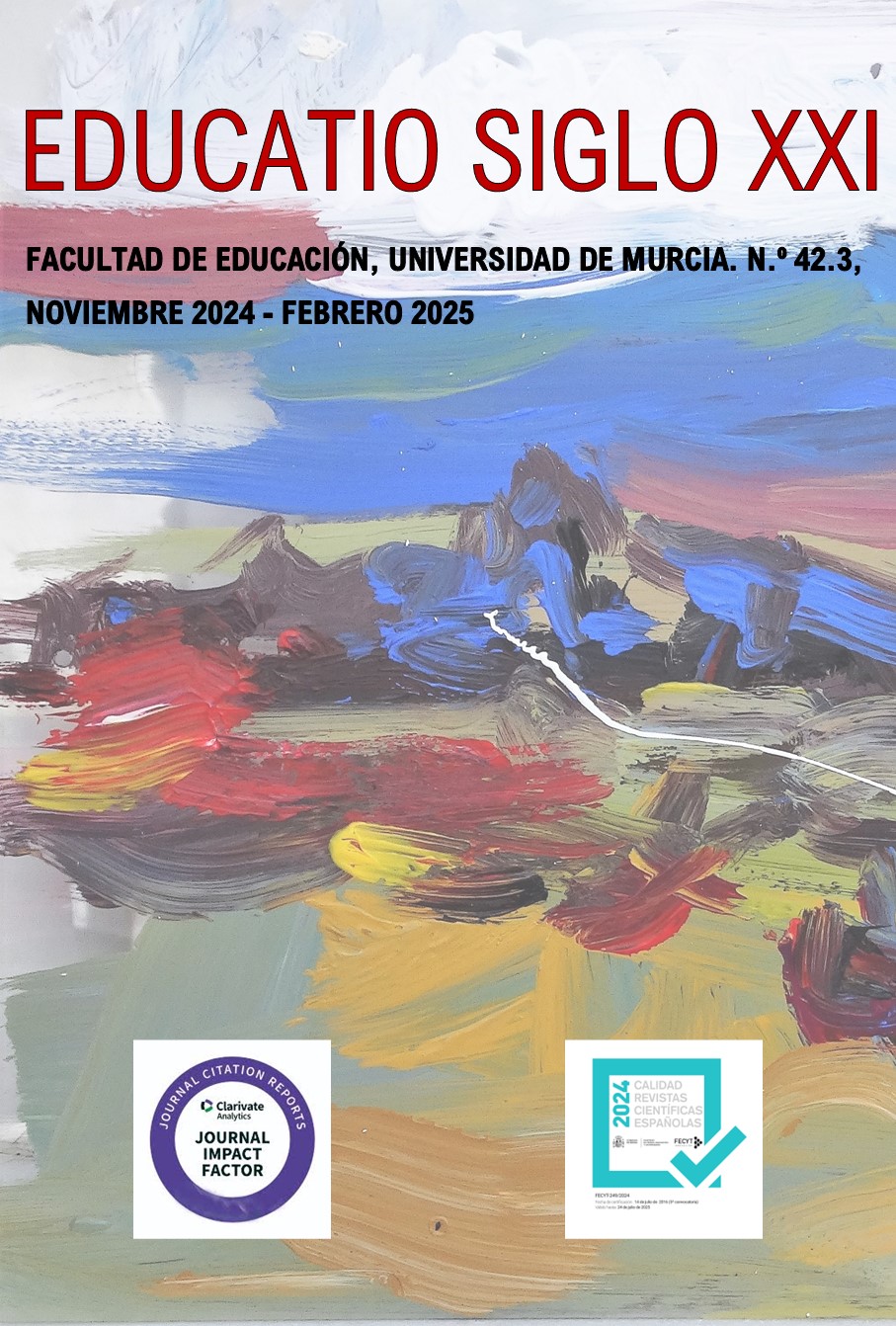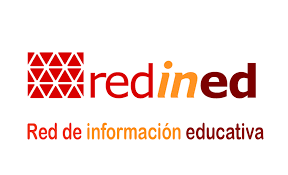Family-related sociodemographic factors and cyberbullying perpetration in Primary Education in Spain
Abstract
Cyberbullying is an aggressive and intentional act by one or more aggressors against a victim, using technology. The prevalence of cyberbullying perpetration in Primary Education in Spain is between 1.3% and 13.3%, although it has increased due to the lockdown derived from COVID-19. Cybervictimization in Secondary Education and dynamic family variables have been more studied in comparison with cyberperpetration in Primary Education and sociodemographic family variables, respectively. For this reason, the objective of this study is to evaluate the relationship between family sociodemographic variables (age, gender, educational level, immigration background, family structure, and degree of rurality of the municipality of family residence) and Primary Education cyberperpetration. A total of 1169 families of Primary Education (Year 5 and 6) were surveyed using a self-administered questionnaire (α = .84). Data analysis was performed through binary logistic regression using the statistical software R, version 4.1.0. The multivariate model was implemented by a stepwise procedure until the best predictive model was obtained in terms of the Akaike Information Criterion (AIC). Immigration background, parents’ educational level, and family structure have a significant joint influence on cyberperpetration by Primary Education students. It is concluded that family-related sociodemographic variables predict the fact that students are cyberbullying aggressors. A cyberbullying prevention program following whole policy models is proposed.
Downloads
-
Abstract636
-
PDF (Español (España))403
References
Abdulsalam, A., Aldaihani, A., & Francis, K. (2017). Prevalence and Associated Factors of Peer Victimization (Bullying) among Grades 7 and 8 Middle School Students in Kuwait. International Journal of Pediatrics, 2017(3), 1-8. http://doi.org/10.1155/2019/8462304
Adigwe, I. (2021). Identifying the Moderating and Mediating Variables in Parental Mediation Practices in Nigerian Families in the Digital Age. Social Media+Society, 7(3), 1-12. http://doi.org/10.1177/20563051211033817
Alonso-Montejo, M.M., Zamorano-González, E., & Ledesma-Albarránc, J.M. (2019). ¿Qué saben nuestros niños de la escuela primaria sobre acoso escolar? Revista Pediatría Atención Primaria, 21(82), 121-129. https://bit.ly/3TqnONT
Anccana, L. P., Copaja, F. H., & Mandarachi, R. P. (2022). Ciberbullyng en tiempos de pandemia. Ciencia Latina Revista Científica Multidisciplinar, 6(4), 1274-1286. http://doi.org/10.37811/cl_rcm.v6i4.2660
Arató, N., Zsidó, A. N., Lénárd, K., & Lábadi, B. (2020). Cybervictimization and cyberbullying: The role of socio-emotional skills. Frontiers in psychiatry, 11, 248. http://doi.org/10.3389/fpsyt.2020.00248
Bevilacqua, L., Shackleton, N., Hale, D., Allen, E., Bond, L., Christie, D., Elbourne, D., Fitzgerald-Yau, N., Fletcher, A., Jones, R., Miners, A., Scott, S., Wiggins, M., Bonell, C., & Viner, R. (2017). The role of family and school-level factors in bullying and cyberbullying: A cross-sectional study. BMC Pediatrics, 17(160), 160-170. http://doi.org/10.1186/s12887-017-0907-8
Beyazit, U., Şimşek, S., & Ayhan, A.B. (2017). An examination of the predictive factors of cyberbullying in adolescents. Social Behavior and Personality: an international journal, 45(9), 1511-1522. http://doi.org/10.2224/sbp.6267
Çakır, Ö., Gezgin, D. M., & Ayas, T. (2016). The Analysis of the Relationship between Being a Cyberbully and Cybervictim among Adolescents in Terms of Different Variables. International Journal of Progressive Education, 12(3), 134-154. https://bit.ly/3zXJ9Da
Calmaestra, J., Rodríguez-Hidalgo, A.J., Mero-Delgado, O., & Solera, E. (2020). Cyberbullying in Adolescents from Ecuador and Spain: Prevalence and Differences in Gender, School Year and Ethnic-Cultural Background. Sustainability, 12, 4597. http://doi.org/10.3390/su12114597
Camerini, A-L., Marciano, L., Carrara, A., & Schulz, P. (2020). Cyberbullying perpetration and victimization among children and adolescents: A systematic review of longitudinal studies. Telematics and Informatics, 49, 1-13. http://doi.org/10.1016/j.tele.2020.101362.
Comas-Forgas, R., Sureda-Negre, J., & Calvo-Sastre, A. (2017). Characteristics of Cyberbullying Among Native and Immigrant Secondary Education Students. International Journal of Cyber Behavior, Psychology and Learning, 7, 1-17. http://doi.org/10.4018/IJCBPL.2017010101
Cox, D.R. (1970). Analysis of Binary Data. Chapman and Hall.
Dedkova, L., & Smahel, D. (2019). Online Parental Mediation: Associations of Family Members´ Characteristics to Individual Engagement in Active Mediation and Monitoring. Journal of Family Issues, 41(8), 1-25. http://doi.org/10.1177/0192513X19888255
Dujmic, Z., Cosic, V., Rajkovaca, I., Vcev, A. & Miskic, B. (2019). Cyberbullying in Early Adolescence: Is There a Difference Between Urban and Rural Environment? Am J Biomed Sci & Res., 1(5), 191-196. http://doi.org/10.34297/AJBSR.2019.01.000542
Estévez, M. (2021). Acoso escolar y ciberacoso en educación primaria: prevalencia e intervención psicoeducativa (Tesis doctoral, Universidad de Sevilla). https://bit.ly/3VeXwgF
Garaigordobil, M. (2011). Prevalencia y consecuencias del cyberbullying: Una revisión. International Journal of Psychology and Psychological Therapy, 11(2), 233-254. https://bit.ly/2JqSAV5
Hosmer, D., Lemeshow, S., & Sturdivant, R.X. (2000). Applied Logistic Regression. John Wiley & Sons.
Li, B., & Babu, G.J. (2019). A graduate course on statistical inference. Springer.
Livingstone, S., Mascheroni, G., Dreier, M., Chaudron, S., & Lagae, K. (2015). How parents of young children manage digital devices at home: The role of income, education and parental style. EU Kids Online, LSE. https://bit.ly/3VdxR8a
Livingstone, S., Ólafsson, K., Helsper, E. J., Lupiáñez-Villanueva, F.,
Veltri, G. A., & Folkvord, F. (2017). Maximizing Opportunities and
Minimizing Risks for Children Online: The Role of Digital Skills in
Emerging Strategies of Parental Mediation. Journal of Communication,
(1), 82-105. http://doi.org/10.1111/jcom.12277
López-Castro, L., Priegue, D. (2019). Influence of Family Variables on Cyberbullying Perpetration and Victimization: A Systematic Literature Review. Social Science, 8(3), 98-123. http://doi.org/10.3390/socsci8030098
Machimbarrena, J.M., & Garaigordobil, M. (2018). Prevalence of bullying and
cyberbullying in the last stage of primary education in the Basque Country. The Spanish Journal of Psychology, 21(e48), 1-10. http://doi.org/10.1017/sjp.2018.41
Machimbarrena, J. M., González-Cabrera, J., & Garaigordobil, M. (2019). Variables familiares relacionadas con el bullying y el cyberbullying: Una revisión sistemática. Pensamiento Psicológico, 17(2), 37-56. http://doi.org/10.11e144/javerianacali.ppsi17-2.vfrb
Nikken, P., & Schols, M. (2015). How and Why Parents Guide the Media Use of Young Children. Journal of Child and Family Study, 24(11), 3423-3435. http://doi.org/10.1007/s10826-015-0144-4
Peter, I.K., & Petermann, F. (2018). Cyberbullying: A concept analysis of defining attribures and additional influencing factors. Rev. Computers in human behavior, 86, 350-366. http://doi.org/10.1016/j.chb.2018.05.013
R Core Team. (2020). R: A language and environment for statistical computing. R Foundation for Statistical Computing. https://CRAN.R-project.org/
Ripley, B. (2020). MASS: Support Functions and Datasets for Venables and Ripley’s Mass. https://CRAN.R-project.org/package=MASS.
Rodríguez-Álvarez, J. M., Navarro, R., & Yubero, S. (2022). Bullying/cyberbullying en quinto y sexto curso de educación primaria: diferencias entre contextos rurales y urbanos. Psicología Educativa, 28(2), 117-126. http://doi.org/10.5093/psed2021a18
Sidera, F., Serrat, E., Collell, J., Perpiñà, G., Agell, S., Ortiz, R., Amadó, A., & Rostan, C. (2021). Informe sobre el acoso y el ciberacoso en la educación primaria en Cataluña. Fundación Barça. https://bit.ly/3v2tJgE
Smith, P.K. (2019). Research on Cyberbullying: strengths and Limitations. In H. Vandebosch and L. Green (Eds.), Narratives in research and interventions on cyberbullying among young people (pp. 9-27). Springer Cham. http://doi.org/10.1007/978-3-030-04960-7_2
Smith, P.K., Mahdavi, J., Carvalho, M., Fisher, S., Russell, S., & Tippett, N. (2008). Cyberbullying: Its nature and impact in secondary school pupils. Journal of child psychology and psychiatry, 49(4), 376-385. http://doi.org/10.1111/j.1469-7610.2007.01846.x
Talleyrand, R., & Vojtech, J. (2019). Potential stressors of undocumented Latinx youth: Implications and recommendations for school counselors. Professional School Counseling, 22(1), 1-8. http://doi.org/10.1177/2156759X19847168
Uludasdemir, D., & Kucuk, S. (2019). Cyber Bullying Experiences of Adolescents and Parental Awareness: Turkish Example. Journal of pediatric nursing, 44, 84-90. http://doi.org/10.1016/j.pedn.2018.11.006
Wright, M. F. (2017). Parental mediation, cyberbullying, and cybertrolling: The role of gender. Computers in Human Behavior, 71, 189–195. http://doi.org/10.1016/j.chb.2017.01.059
Copyright (c) 2024 Servicio de Publicaciones de la Universidad de Murcia

This work is licensed under a Creative Commons Attribution-NonCommercial-NoDerivatives 4.0 International License.
Original work publishes in this journal is subject to the following terms:
1. Murcia University Press (the publishing house) holds the copyright of the publishes work, and favours and allows their reutilization under the use license stated in point 2.
© Servicio de Publicaciones, Universidad de Murcia, 2015
2. Work is published in the electronic edition under a license (Creative Commons Reconocimiento-NoComercial-SinObraDerivada 4.0 España (legal text). They can be copied, used, disseminated, transmitted and publicly presented, as long as: i) authorship and original publication source is acknowledged (journal, publishing house and URL of the work); ii) are not used for commercial purposes; iii) the existence and specifications of this use license is stated.
3. Conditions for self-archive. Authors are allowed and encouraged to disseminate electronically the pre-pint (before review) and/or post-print (accepted for publication) versions of their work before their publication since that favours earlier circulation and dissemination resulting in an increased chance for the authors to be cited and for the work to reach a bigger share of the academic community. Colour: RoMEO: green.







